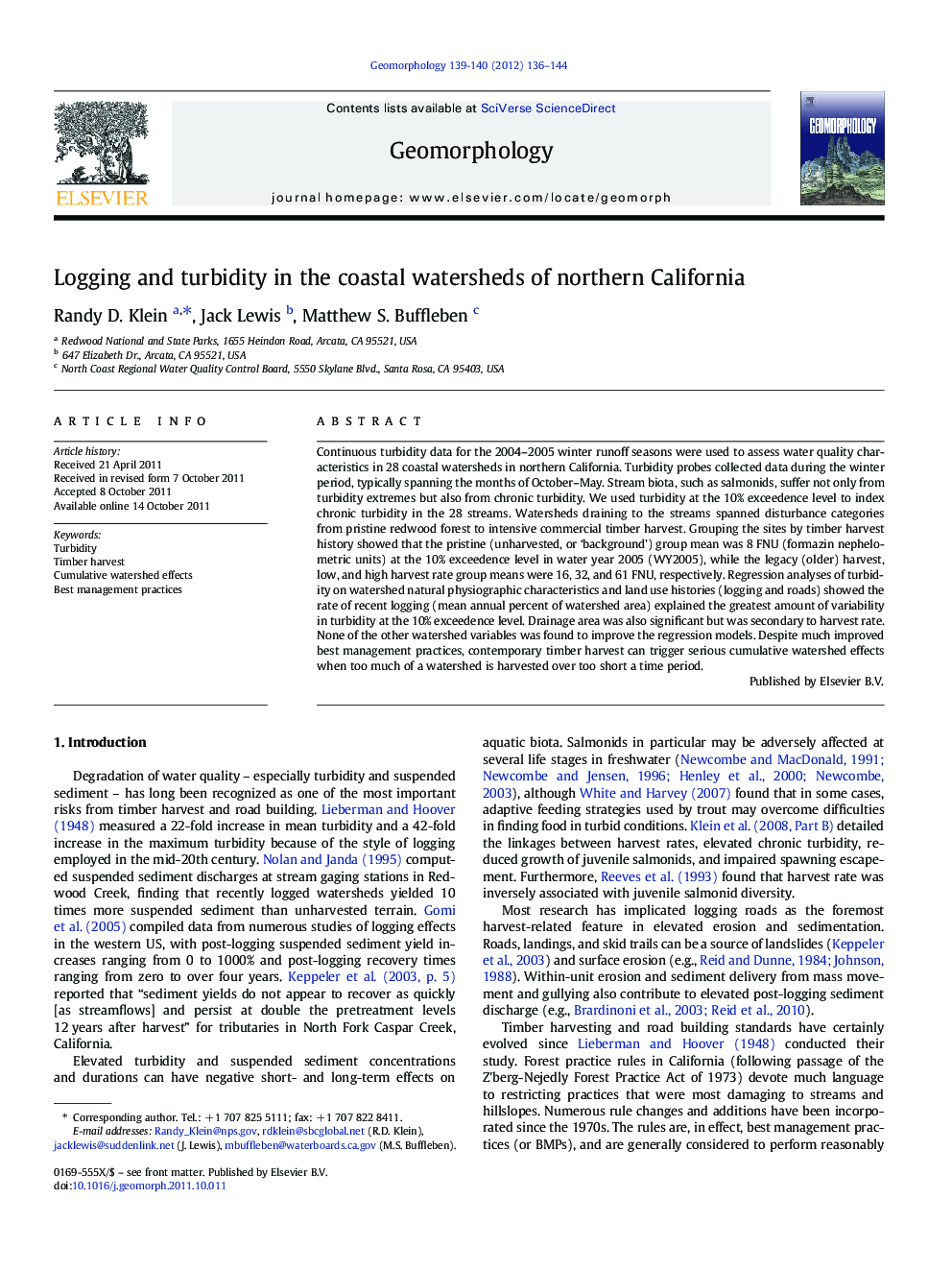| Article ID | Journal | Published Year | Pages | File Type |
|---|---|---|---|---|
| 4685301 | Geomorphology | 2012 | 9 Pages |
Continuous turbidity data for the 2004–2005 winter runoff seasons were used to assess water quality characteristics in 28 coastal watersheds in northern California. Turbidity probes collected data during the winter period, typically spanning the months of October–May. Stream biota, such as salmonids, suffer not only from turbidity extremes but also from chronic turbidity. We used turbidity at the 10% exceedence level to index chronic turbidity in the 28 streams. Watersheds draining to the streams spanned disturbance categories from pristine redwood forest to intensive commercial timber harvest. Grouping the sites by timber harvest history showed that the pristine (unharvested, or ‘background’) group mean was 8 FNU (formazin nephelometric units) at the 10% exceedence level in water year 2005 (WY2005), while the legacy (older) harvest, low, and high harvest rate group means were 16, 32, and 61 FNU, respectively. Regression analyses of turbidity on watershed natural physiographic characteristics and land use histories (logging and roads) showed the rate of recent logging (mean annual percent of watershed area) explained the greatest amount of variability in turbidity at the 10% exceedence level. Drainage area was also significant but was secondary to harvest rate. None of the other watershed variables was found to improve the regression models. Despite much improved best management practices, contemporary timber harvest can trigger serious cumulative watershed effects when too much of a watershed is harvested over too short a time period.
